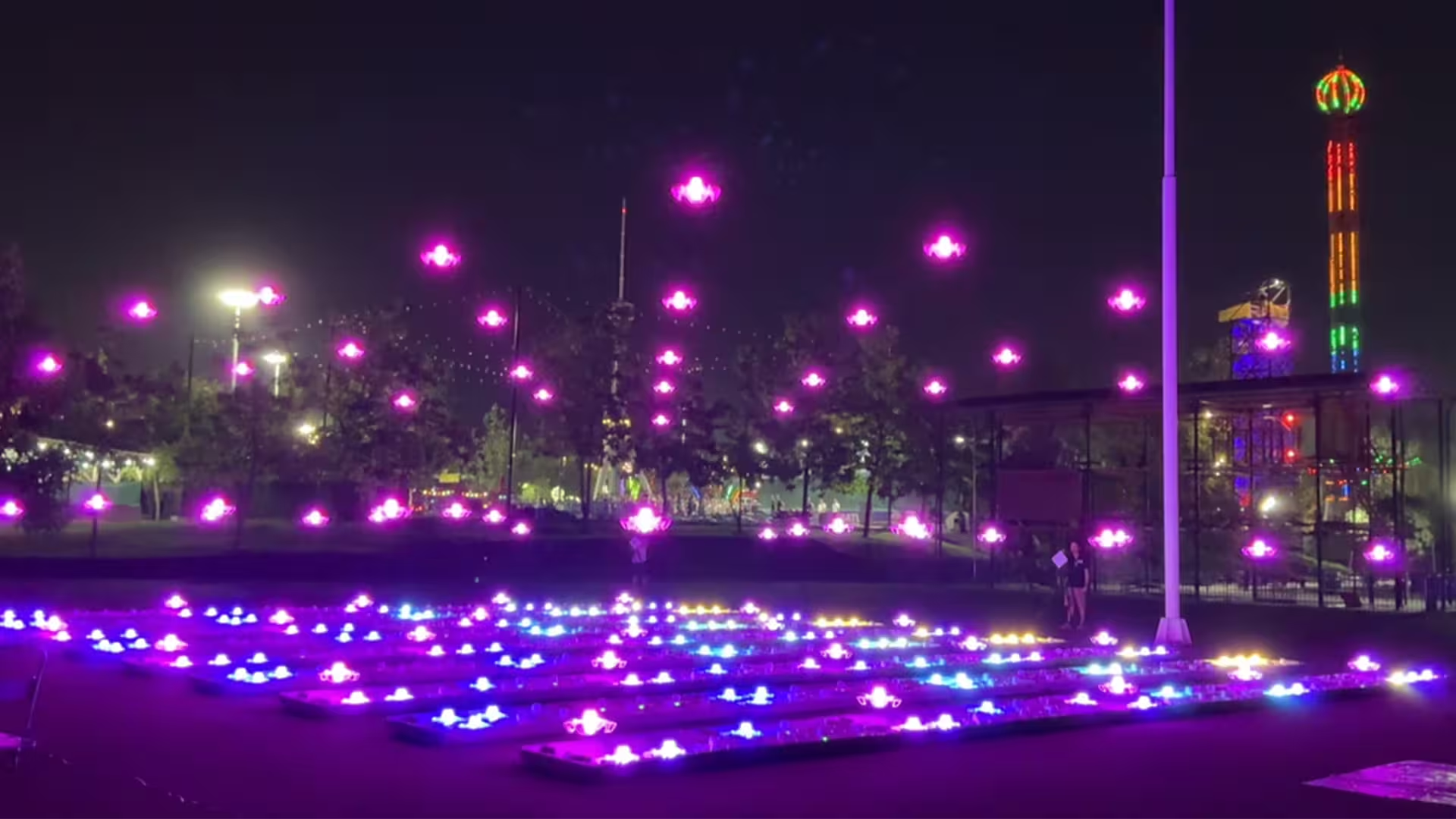
The Prospects and Opportunities in the Drone Light Show Industry
With the rapid advancement of technology, drone light shows have evolved from a novel spectacle into a standard feature for various events. Compared to traditional fireworks, drones offer more complex and dynamic visual effects while also providing environmental friendliness, safety, and reusability. These advantages have led to their increasing popularity in city celebrations, international sporting events, concerts, brand launches, and cultural tourism performances.
In recent years, global demands for environmental protection and low-carbon solutions have limited the use of traditional fireworks due to pollution and safety concerns. Drone light shows offer an effective alternative, delivering visually stunning experiences while minimizing risks and promoting eco-friendly events. This trend has encouraged event organizers to adopt drone shows to enhance the technological sophistication and modern appeal of their programs.
The promotional impact of drone light shows is equally impressive. In an era dominated by social media and short video platforms, a well-executed drone performance can not only attract a large audience on-site but also generate millions or even billions of online impressions, creating significant marketing value for brands and events. Compared to traditional performances, drones offer repeatability and customization, allowing each show to deliver a unique visual experience, strengthening audience memory and event impact.
From a business perspective, the industry is diversifying. Companies can choose to build their own teams with independent show capabilities, earning revenue through city celebrations or commercial events. Alternatively, they can collaborate with professional drone show companies, leveraging established teams and equipment to reduce entry barriers. Some businesses adopt a hybrid approach, combining equipment purchase with outsourced services, gradually entering the market. This flexibility offers newcomers multiple pathways depending on their resources and budget.
In summary, the drone light show industry is in a rapid growth phase, with technological innovation, creative design, and commercial application continuously converging. For businesses and individuals looking to enter this field, it presents a challenging yet highly rewarding opportunity. Understanding industry trends, recognizing market needs, and choosing the right entry strategy will be key to success.
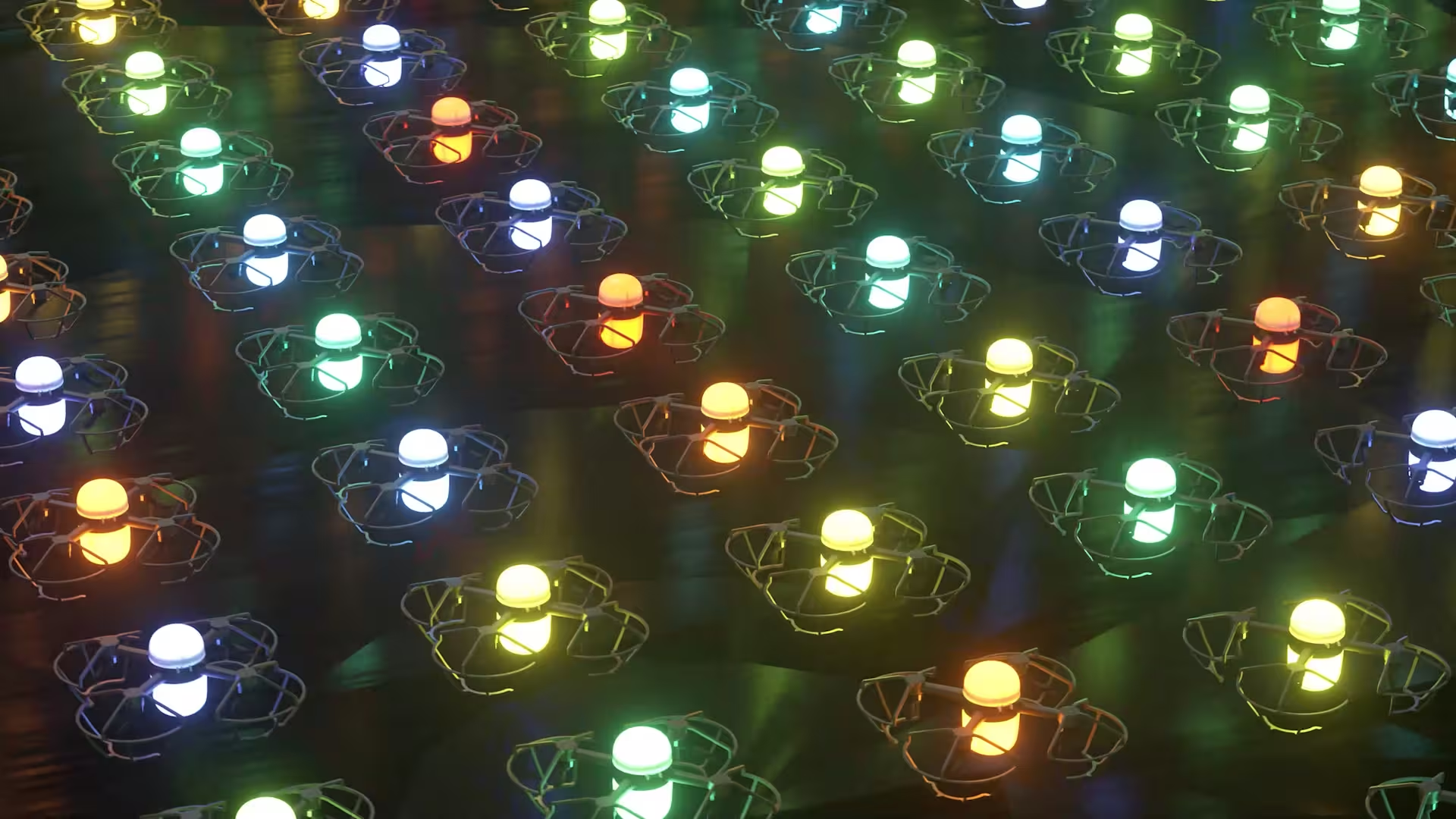
Essential Hardware and Software for Drone Light Shows
For newcomers to the drone light show industry, hardware and software form the backbone of every performance. Without reliable equipment and efficient software tools, even the most creative concepts cannot be fully realized. The following section provides a detailed overview of drones, supporting systems, and software.
1. Drone Units
The drone itself is the “main body” of the light show, directly influencing visual impact and safety. Key considerations include:
- Lighting modules: Brightness, color variety, controllability, and lifespan. High-brightness, multi-color, independently controlled lights create richer patterns and animations.
- Positioning accuracy: GPS and RTK systems ensure precise flight paths. High-precision positioning enables centimeter-level control, keeping formations stable.
- Flight performance: Battery life, wind resistance, and safety redundancy affect both performance quality and operational safety.
2. Ground Systems and Supporting Equipment
While drones are critical, ground systems are equally important.
- Control consoles and ground stations: Centralized management of flight paths and lighting commands ensures each drone follows its preset trajectory.
- Communication modules: Maintain stable real-time links between drones and the ground station, preventing deviations or accidents due to signal interference.
- Battery and charging management: Efficient charging solutions and battery management reduce setup time and ensure smooth multiple performances.
- Transport and storage: Professional protective cases and streamlined deployment methods reduce transportation risks and safeguard equipment.
3. Software Tools
Drone light shows are not just hardware-driven; they are also software-powered artistic creations. Proper software significantly improves efficiency and ensures creative vision comes to life. Core tools include:
- Formation programming software: Designs flight paths and lighting sequences to achieve precise complex formations.
- Lighting control systems: Manage each drone’s color, brightness, and dynamic patterns, ensuring coordinated effects.
- 3D simulation platforms: Previsualize the performance in a virtual environment to identify conflicts or issues, reducing on-site troubleshooting.
When selecting hardware and software, consider usability, safety, after-sales support, and training services. For new entrants, an integrated “one-stop solution” can greatly lower learning curves and reduce operational risks.
In summary, the success of a drone light show depends on the organic combination of stable drones, reliable ground systems, and efficient software tools. Proper integration of these core elements ensures performances are safe, smooth, and visually spectacular.
Team Structure and Personnel for Drone Light Shows
While hardware and software form the foundation of drone light shows, it is a professional team that ensures performances run smoothly and achieve artistic impact. Proper personnel allocation guarantees safety, efficiency, and the full realization of creative ideas.
1. Core Roles
A complete drone light show team typically includes the following key roles:
- Pilots/Technicians: Responsible for drone operation, calibration, and flight control. Pilots must understand the equipment, respond quickly to unexpected situations, and ensure drones follow their preset trajectories safely.
- Choreographers/Lighting Designers: Design drone flight movements and lighting effects, translating creative concepts into executable formations and visual displays.
- Project Manager: Oversees the entire project, from planning and scheduling to team coordination, ensuring smooth execution.
- Security and Logistics Staff: Ensure on-site safety, manage transportation, deployment, and retrieval of drones, and handle emergencies.
2. Training and Qualifications
Operating a drone light show requires trained personnel, particularly pilots and technicians. Key training and certifications include:
- Drone Operation Training: Familiarity with drone flight characteristics, lighting control, and emergency procedures. Most equipment providers offer comprehensive training programs.
- Flight Licenses: Depending on the country or region, pilots may need official drone flight licenses or operational permits.
- Safety and Emergency Handling: Team members must understand on-site safety protocols and emergency procedures to respond quickly during performances.
3. Team Collaboration and Experience
Drone light shows are highly collaborative performances, where the coordination of each member directly affects the final outcome. Experienced teams can:
- Deploy and calibrate drones efficiently on-site
- Execute complex formations and lighting changes accurately
- Adapt flexibly to sudden weather changes or equipment issues
For newcomers, starting with small-scale shows or collaborating with established teams can help build experience and gradually establish a full team structure.
In summary, proper personnel allocation, structured training, and effective team collaboration are essential for safe, high-quality drone light show performances. Only a professional team can seamlessly integrate creativity and technology to deliver stunning visual experiences.
Regulations and Compliance for Drone Light Shows
Drone light shows rely not only on technology and creativity but also on strict adherence to relevant regulations. Whether for large city celebrations or commercial events, understanding and following regulations is essential for safe and smooth performances.
1. Airspace Approval
Drones are considered low-altitude aircraft and are strictly regulated by civil aviation authorities. Rules vary by country or city:
- Flight height and range: Most regions define maximum allowed flight heights and permitted flight zones.
- Crowded areas: Flying over city centers or large audience gatherings typically requires special permission.
- Submission procedures: Some regions require teams to submit flight plans in advance, including the number of drones, flight times, routes, and safety measures.
Completing airspace approval in advance ensures that the show can proceed as planned without interruption.
2. Safety Standards
Drone light shows involve multiple drones flying simultaneously, making safety standards critical:
- Safe distances: Maintain safe separation between drones, spectators, and obstacles.
- Emergency procedures: Teams should have contingency plans for emergency landing, power failure, and communication loss.
- Equipment checks: Before each show, inspect batteries, motors, lighting modules, and communication systems to ensure proper functioning.
3. Data Security and Privacy
Drones often carry cameras or monitoring devices, and some regions impose strict requirements on data collection and transmission:
- Flight logs: Certain countries require recording flight paths, times, and operator information for traceability.
- Privacy protection: Avoid capturing or distributing personal data of spectators in public venues.
4. Legal Responsibility
Non-compliance can result in legal and financial consequences:
- Fines and administrative penalties: Unauthorized flights may lead to fines or forced show cancellation.
- Accident liability: Teams may be responsible for damages caused by drone crashes or operational errors.
- Insurance coverage: Adequate third-party drone liability insurance helps mitigate potential risks.
In summary, drone light show teams must be well-versed in local regulations, strictly adhere to airspace approval procedures, safety standards, and data protection measures. Compliance ensures that creativity and technology can be safely and effectively combined to deliver stunning performances.
Drone Light Show Performance Execution Process
Drone light shows are not only a display of technology but also a result of team collaboration and meticulous management. To ensure smooth, safe, and visually stunning performances, a structured execution process is essential, spanning from preparation to live performance and post-show review.
1. Pre-Event Preparation
Pre-event preparation lays the foundation for performance quality and safety:
- Site survey: Analyze the venue’s geography, obstacles, wind conditions, and signal interference to inform flight planning.
- Formation and lighting design: Design drone formations, flight movements, and lighting effects based on the performance theme to create a complete visual plan.
- Software simulation and rehearsal: Use 3D simulation tools to previsualize the performance, verifying formations, lighting sequences, and safety distances while identifying and correcting potential issues.
2. On-Site Implementation
On the day of the show, the team must strictly follow procedures, ensuring precision at every step:
- Drone placement and positioning: Deploy drones according to the rehearsal plan, ensuring each drone starts from the correct location.
- Communication and control checks: Verify the stability of communication between drones and the ground control system to prevent command delays.
- Rehearsal and safety inspection: Conduct full rehearsals, check battery status, lighting modules, and flight systems, and confirm safety measures are in place.
3. Live Performance and Real-Time Monitoring
- Real-time monitoring: The control console tracks drone status, flight paths, and lighting in real time to ensure coordinated performance.
- Emergency response: The team must be ready to handle unexpected events such as equipment failure or sudden weather changes, activating contingency plans to maintain safety.
4. Post-Performance Review
Post-show review and summary are equally important:
- Equipment retrieval and maintenance: Inspect and maintain drones and supporting equipment to ensure readiness for the next performance.
- Data archiving: Preserve flight paths, lighting programs, and performance records for optimization and client demonstration.
- Performance debrief and client feedback: Summarize lessons learned and collect client feedback to improve future shows.
In summary, a structured and standardized performance execution process can reduce risks, improve show quality, and ensure that drone light shows deliver the best visual impact safely and reliably.
Costs and Budgeting for Drone Light Shows
As an emerging form of technological performance, drone light shows involve complex cost structures. Proper budgeting helps control expenses while ensuring show quality and team profitability.
1. Initial Investment
Entering the drone light show industry requires significant upfront investment in equipment and team development:
- Drones and supporting equipment: Includes lighting modules, control systems, batteries, and transport cases. Prices vary widely depending on the number and performance of drones, ranging from tens of thousands to several hundred thousand USD per system.
- Software licenses and programming tools: Used for formation design, lighting control, and 3D previsualization. High-end software may require separate licenses or subscription fees.
- Team training and certifications: New teams need training courses for pilots, technicians, and designers, and may need to obtain flight licenses or operational permits.
2. Operational Costs
In addition to initial investment, ongoing operational expenses include:
- Battery consumption and maintenance: Drone batteries have limited lifespans and need replacement; power is consumed during performances.
- Equipment maintenance and upgrades: Regular maintenance and software updates keep drones and control systems performing optimally.
- Personnel and transport costs: Includes on-site operators, project managers, and logistics for transporting equipment.
3. Revenue Models
Drone light shows generate revenue through various models:
- Per-show fees: Charged based on the number of drones, duration, and complexity. Small-scale shows may use a few dozen drones, while large commercial events can require hundreds.
- Long-term contracts: Establishing partnerships with city celebrations or cultural tourism projects provides stable cash flow.
- Equipment rental and service outsourcing: Renting drones or providing technical performance services reduces upfront investment pressures.
4. Investment Return and Budgeting Tips
- Gradual expansion: New teams can start with small-scale shows of a few dozen drones and expand as experience and market presence grow.
- Risk management: Reserve backup equipment and contingency funds to ensure performance safety and client satisfaction.
- Cost optimization: Choose high cost-performance equipment, consolidate training resources, and standardize processes to reduce operational expenses.
In summary, careful cost planning and effective budget control are key to sustainable operations in the drone light show industry. Understanding initial investments, ongoing costs, and revenue models allows teams to maintain high-quality performances while achieving stable commercial returns.
Risks and Considerations in Drone Light Shows
Drone light shows deliver breathtaking visual experiences, but they also involve inherent risks. Identifying potential hazards, implementing protective measures, and establishing contingency plans are crucial for safe and smooth performances.
1. Technical Risks
Drone light shows involve multiple drones flying simultaneously, relying heavily on technical systems:
- Signal interference: Wireless communication can be affected by environmental or electromagnetic interference, causing delays or disconnections that affect flight stability.
- Battery failure: Aging or improperly managed batteries may result in mid-flight power loss or insufficient flight time.
- Equipment malfunction: Failures in flight control, lighting modules, or propellers may lead to drone crashes, posing risks to people and property.
2. Legal and Compliance Risks
- Unauthorized flights: Flying without airspace approval or above permitted heights can result in fines or show cancellations.
- Liability: Teams are responsible for injuries or property damage caused by drone accidents.
- Data privacy: Non-compliance with data collection or privacy regulations can trigger legal disputes.
3. Business Risks
As an emerging market, drone light shows carry commercial risks:
- Seasonal fluctuations: Demand may vary, leading to inconsistent revenue.
- Market competition: Lower entry barriers increase competition and provide clients with more options.
- Performance quality: Formation design, lighting effects, or operational errors may reduce client satisfaction and affect long-term partnerships.
4. Contingency and Risk Management
- Backup equipment: Maintain spare drones, lighting modules, and batteries to prevent show interruptions.
- Emergency procedures: Prepare protocols for flight interruptions, battery anomalies, and sudden weather changes.
- Insurance coverage: Third-party drone liability insurance mitigates financial risks from accidents.
- Team training: Ensure all members are familiar with emergency operations and safety standards.
In summary, identifying technical, legal, and commercial risks and implementing comprehensive contingency and protection measures is essential for successful drone light shows. New entrants should carefully assess risks and prepare mitigation strategies to ensure safe, high-quality performances.
Insurance and Safety Measures for Drone Light Shows
In drone light shows, safety relies not only on technology and operator expertise but also on insurance and comprehensive safety measures. A well-established safety framework helps reduce risks, increase client confidence, and provide legal and financial protection for performances.
1. Drone Liability Insurance
With multiple drones operating simultaneously, potential risks include drone crashes, equipment failure, or flight deviations. Drone liability insurance serves several purposes:
- Third-party liability coverage: Provides financial compensation if drones cause injury or property damage to spectators.
- Equipment damage coverage: Some policies cover accidental damage to drones and accessories, reducing repair and replacement costs.
- Accident support: Offers legal consultation and assistance in incident management, relieving pressure on the team.
2. Safety Management System
Insurance is most effective when combined with a strict safety management system:
- Operational protocols: Standardize takeoff, flight, landing, and lighting procedures to ensure consistent execution.
- Pre-flight inspections: Conduct comprehensive checks of drones, batteries, lighting modules, and communication systems to identify and mitigate risks.
- Flight monitoring and contingency plans: Monitor drone status in real-time and establish emergency landing and fault-handling procedures to manage unexpected events.
3. Training and Safety Awareness
Training and awareness among team members are critical for risk prevention:
- Pilot training: Master drone operation, emergency landing, and troubleshooting skills.
- Safety education: Understand flight safety regulations, airspace restrictions, and public safety requirements to enhance risk awareness.
- Emergency drills: Conduct regular simulation exercises to ensure quick and effective responses to unforeseen situations.
4. Client and Public Safety
- Protective measures: Establish safety barriers or buffer zones to maintain a safe distance between drones and spectators.
- Information briefing: Inform clients and audiences in advance about safety protocols, flight zones, lighting effects, and emergency measures.
In summary, combining insurance coverage with strict safety management and regular training is key to ensuring safe, smooth, and sustainable drone light shows. Comprehensive safety measures reduce accident risks while enhancing the professional image of the team and building client trust.
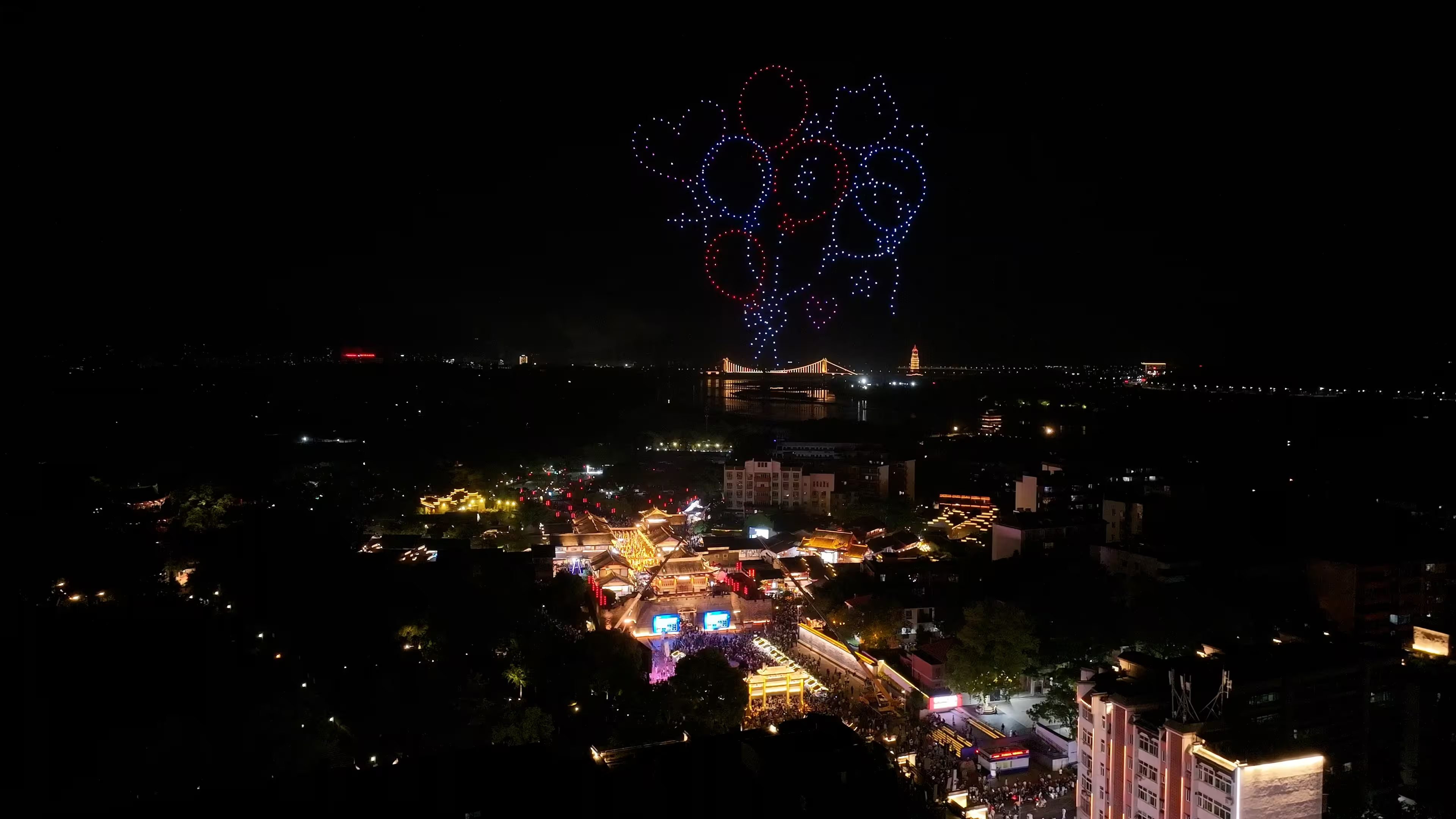
Marketing and Client Acquisition for Drone Light Shows
As an emerging high-tech performance form, drone light shows have enormous market potential. However, promoting the brand, attracting clients, and establishing long-term partnerships are critical for teams entering the industry.
1. Market Positioning and Target Clients
- Market segmentation: Potential clients can be categorized by event type and scale, including city celebrations, commercial events, cultural tourism sites, weddings, and private gatherings.
- Client needs analysis: Different clients have varying requirements for the number of drones, formation complexity, lighting effects, and budgets. Accurate analysis helps design tailored solutions.
- Competitive analysis: Understanding competitors’ pricing, creativity, and service models helps identify advantages and unique selling points.
2. Brand Building
- Online promotion: Use official websites and social media platforms (LinkedIn, Instagram, YouTube) to showcase performance videos, case studies, and team introductions, enhancing brand visibility.
- Content marketing: Publish industry news, technical insights, behind-the-scenes stories, and client cases to establish professional credibility and trust.
- Collaborative promotion: Partner with event planners, cultural tourism organizations, and wedding planners to expand client channels.
3. Sales Strategy and Client Relationship Management
- Customized solutions: Offer differentiated packages based on client requirements, including performance scale, formation design, lighting effects, and budget alignment.
- Demo experiences: Provide small-scale trial performances to potential clients to build trust and increase conversion rates.
- Long-term relationship management: Maintain client records, regularly follow up on activities, and establish long-term partnerships to ensure stable revenue.
4. Industry Exhibitions and Events
- Exhibition showcases: Participate in drone, technology, or entertainment industry exhibitions to demonstrate performance effects and technical capabilities on-site.
- Media coverage: Gain industry media coverage and professional interviews to enhance brand influence and recognition.
In summary, precise market positioning, professional brand building, differentiated sales strategies, and long-term client management are key to acquiring clients and building market competitiveness in the drone light show industry. Through multi-channel promotion and client engagement, new teams can gradually expand their influence and capture market share.
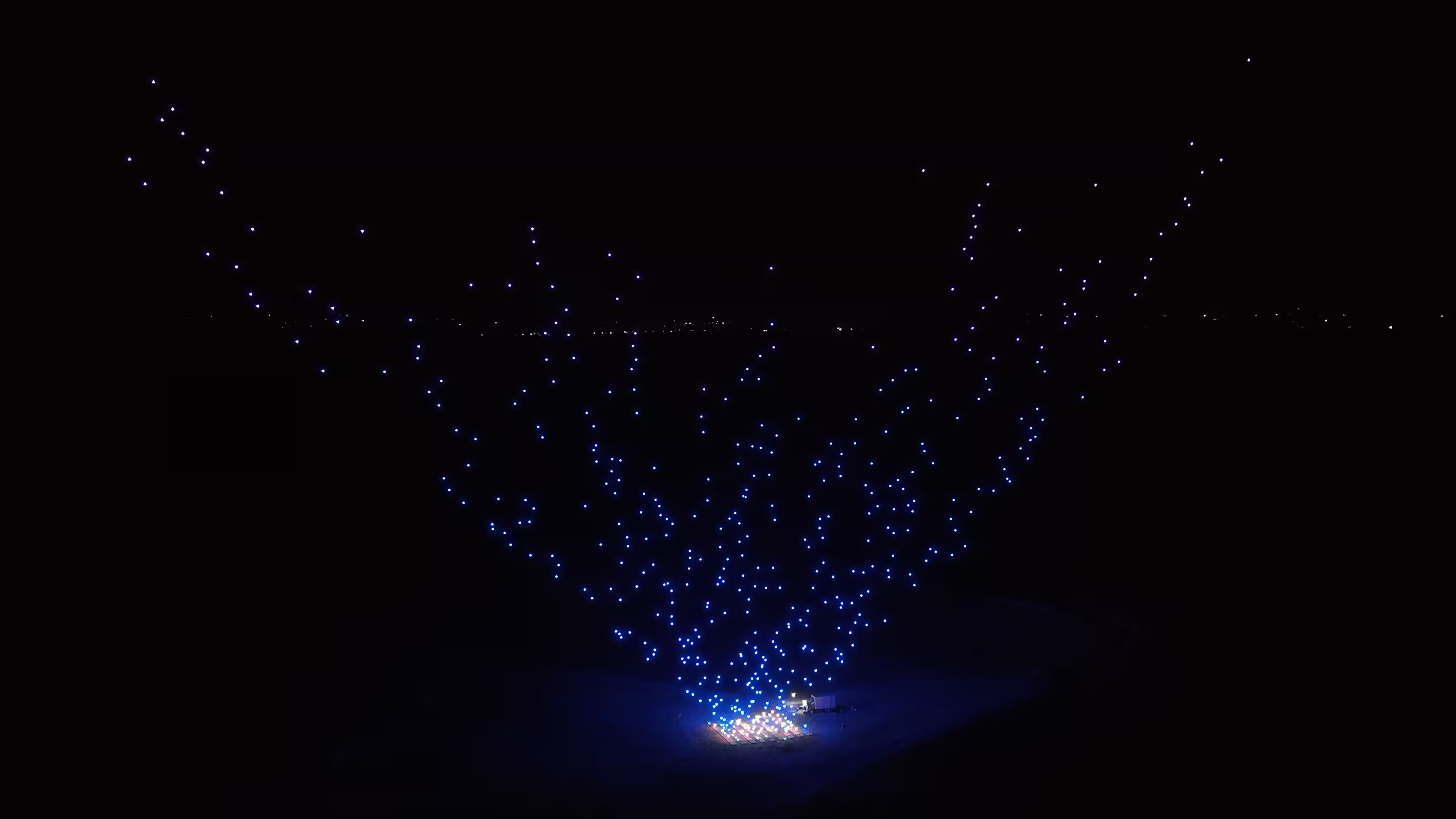
Future Trends and Development Recommendations for Drone Light Shows
With technological advancements and growing market demand, drone light shows are evolving from small-scale performances to large commercial and high-tech interactive shows. Understanding industry trends and future directions helps new teams formulate strategies and enhance competitiveness.
1. Technological Innovation Trends
- High-precision control and automation: Advances in drone positioning systems and control algorithms allow multiple drones to perform more precise formations and complex choreographies.
- Augmented reality and interactive experiences: Integration with AR/VR technology enables audiences to participate via devices, making performances more immersive and diversified.
- Intelligent management systems: AI and big data optimize flight paths, lighting effects, and scheduling, improving efficiency and safety.
2. Market Development Trends
- Growing demand for large-scale commercial events: City celebrations, theme parks, and brand launches increasingly require drone light shows.
- Cross-industry integration: Drone shows will combine with music, cultural tourism, sports events, and concerts, expanding application scenarios.
- International market expansion: As drone regulations improve and market acceptance grows, cross-border performances and overseas opportunities increase.
3. Strategic Development Recommendations
- Continuous technological investment: Focus on drone performance, control systems, and lighting innovation to enhance show quality and creative expression.
- Brand and reputation building: Establish professional image and market credibility through high-quality performances, client cases, and media exposure.
- Collaboration and resource integration: Develop long-term partnerships with event planners, cultural tourism organizations, and technology providers to share resources and leverage strengths.
- Data and experience accumulation: Record performance data, client feedback, and technical insights to support future show optimization.
In summary, the drone light show industry offers immense opportunities but is accompanied by rapid technological and market changes. New entrants should maintain technological awareness, focus on brand building, accumulate experience and client resources, to remain competitive and consistently deliver high-quality, innovative performances.
Summary
The drone light show industry offers immense opportunities. New entrants should maintain technological awareness, focus on brand building, accumulate experience and client resources, and consistently deliver high-quality, innovative performances.
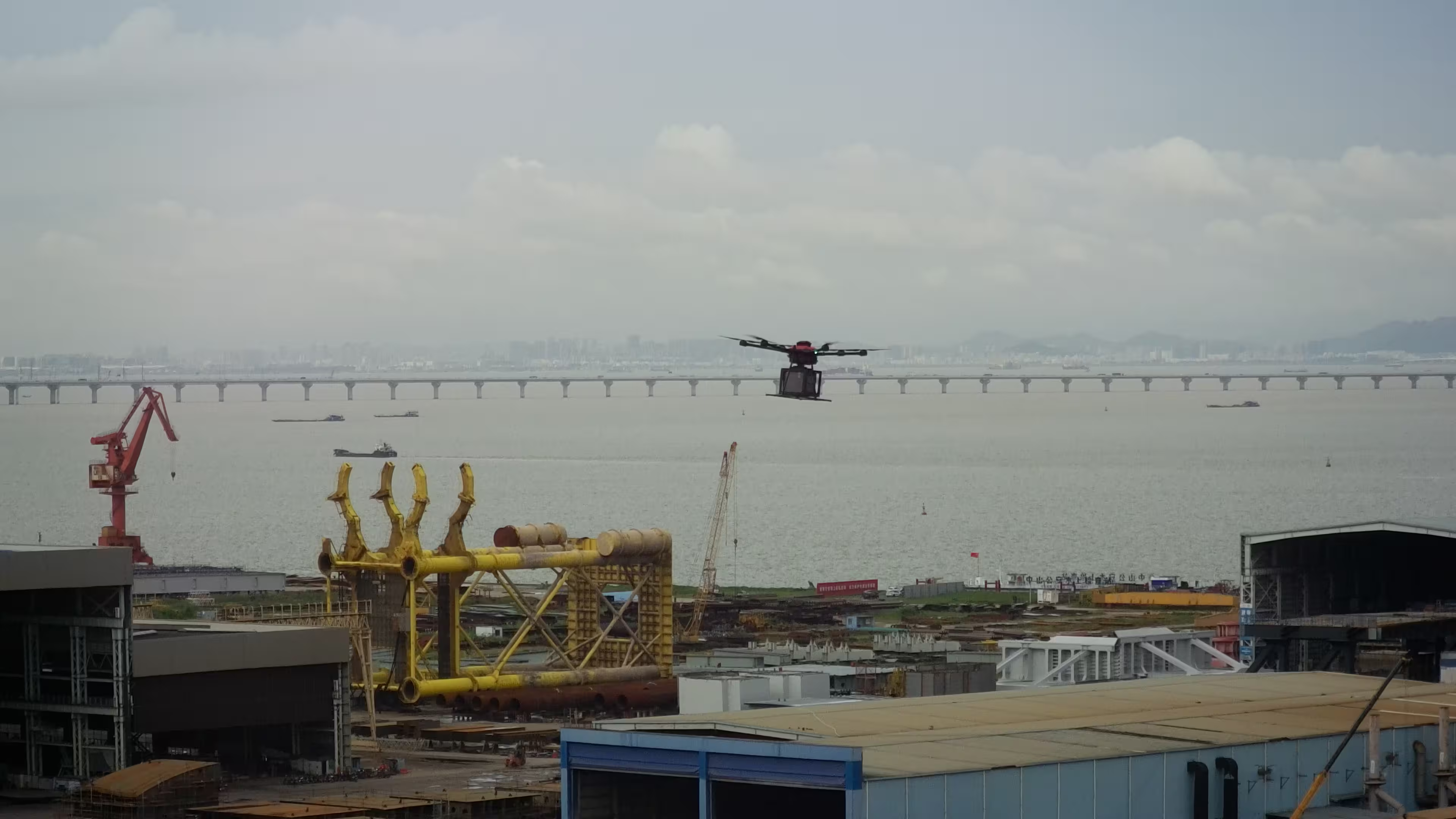
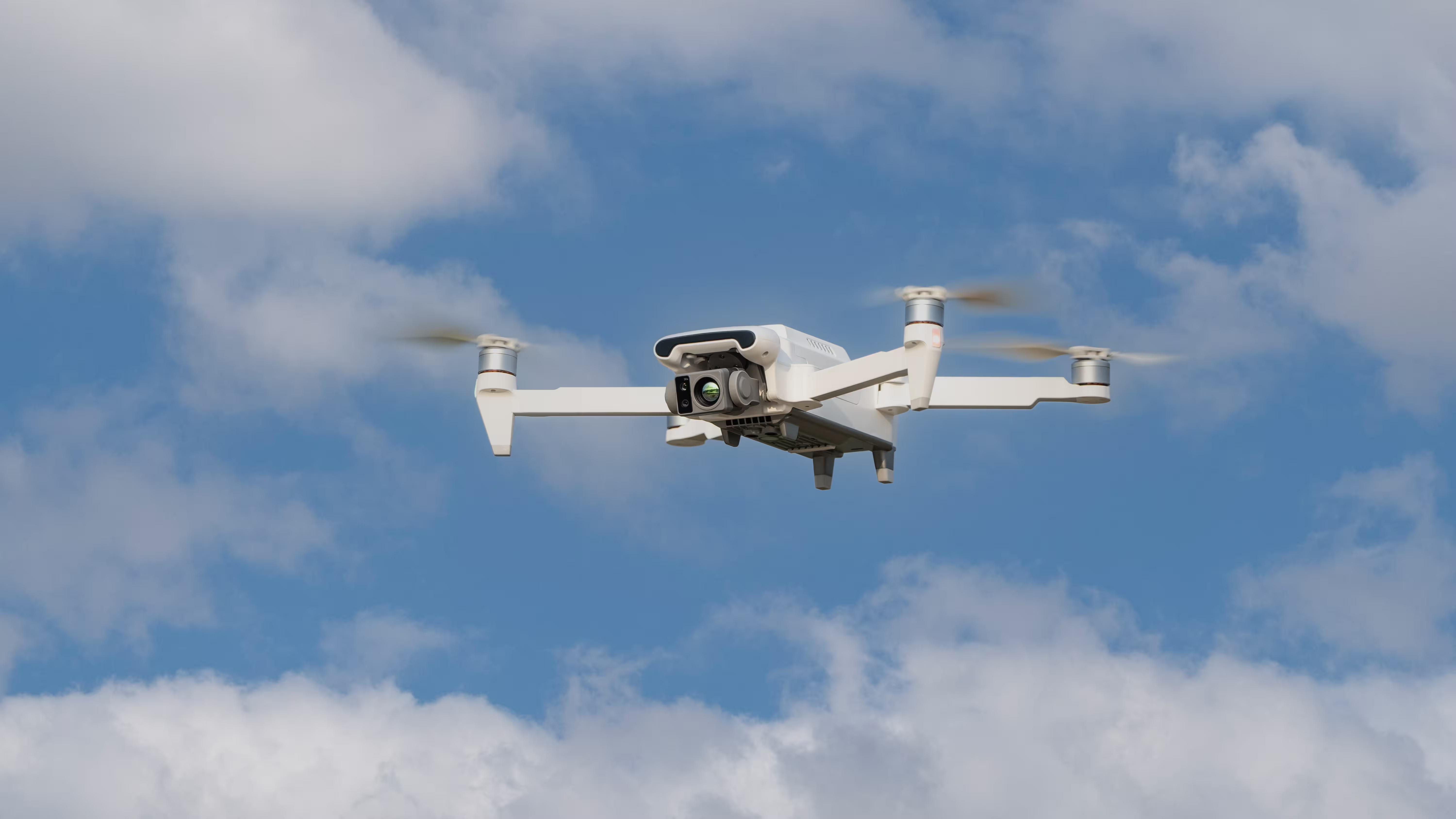


Comments